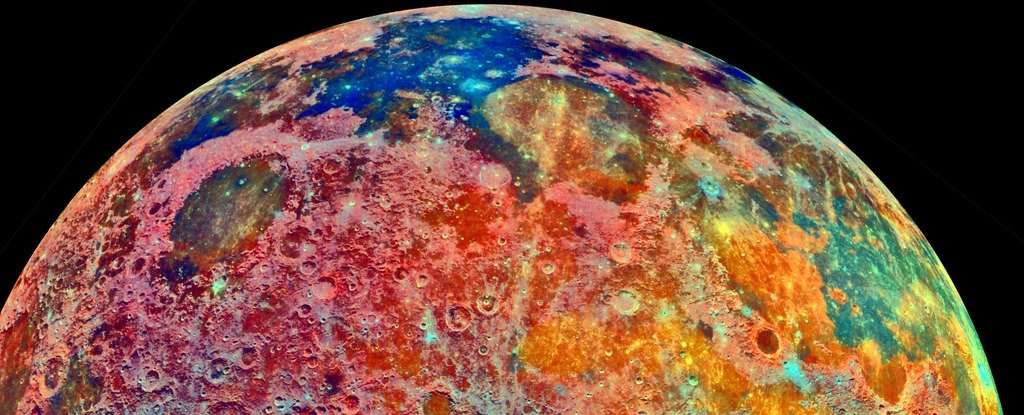The Chinese Chang’e-5 mission showed that liquid lava was present on the surface of the Moon as early as 2 billion years ago, which is very different from the studies done earlier. Scientists have tried to explain how this happened.

When did volcanoes erupt on the Moon?
When the Chinese lunar probe “Chang’e-5” delivered fresh samples of lunar rocks to Earth in 2021, it was not only evidence of the power of the Celestial scientific program and its interest in our moon. They were also of great importance for the whole world of science.
The fact is that samples collected on the surface of the Oceanus Procellarum showed that its surface at the landing site of the probe was formed by lava flows. And they flowed only 2 billion years ago. At the same time, the analysis of the moon rocks collected by the Americans as part of the Apollo program showed that already 3 billion years ago, any activity on the surface of our moon completely stopped.
The same was shown by the Soviet probes of the Luna series, however, they, like the Apollo spacecraft, did not land at all where the Chinese probe was. To overcome these contradictions, scientists have suggested that while the rest of the Moon’s surface cooled down 3 billion years ago under the Oceanus Procellarum, this process lasted much longer.
What prolonged the volcanic activity
Until now, there have been a variety of theories about what caused such late activity of volcanoes on the Moon. However, recently scientists from the Chinese Institute of Geology published a study shedding light on the conditions in which the lava of the Oceanus Procellarum formed.
They analyzed the samples and refuted two theories explaining the late volcanoes at once: the increased water content and the presence of radioactive elements that carried out local heating of the mantle.
Neither one nor the other was found in the samples. However, the researchers noticed that compared to the samples brought by the Apollo crews, there are a lot of titanium and calcium oxides in the samples of “Chang’e-5”. And they melt much more easily for the rest of the substances that make up basalts.
So, the researchers conducted a series of simulations that confirmed that this magma was formed at the same depth as found by Apollo. But its temperatures were 80 degrees less. Thus, as the interior of the Moon cooled, the most fusible components of its mantle were subjected to gravitational deformation and remained molten. And it was its traces that the Chinese apparatus found in the Oceanus Procellarum.
Geologically dead planets?
Interestingly, the evidence of longer geological activity on the Moon almost coincided with similar studies on Mars. After the first interplanetary missions that explored these celestial bodies, they were hastened to recognize them as long dead.
However, it is now known that the Moon continued to remain relatively active geologically in the period from 3 to 2 billion years ago, that is, in fact, until the time when aerobic microorganisms appeared on Earth. And Mars, judging by the latest research, remains so to this day. At least the volcanoes there turned out to be much more complicated than previously thought.
According to www. sciencealert.com
Follow us on Twitter to get the most interesting space news in time
https://twitter.com/ust_magazine

